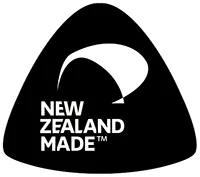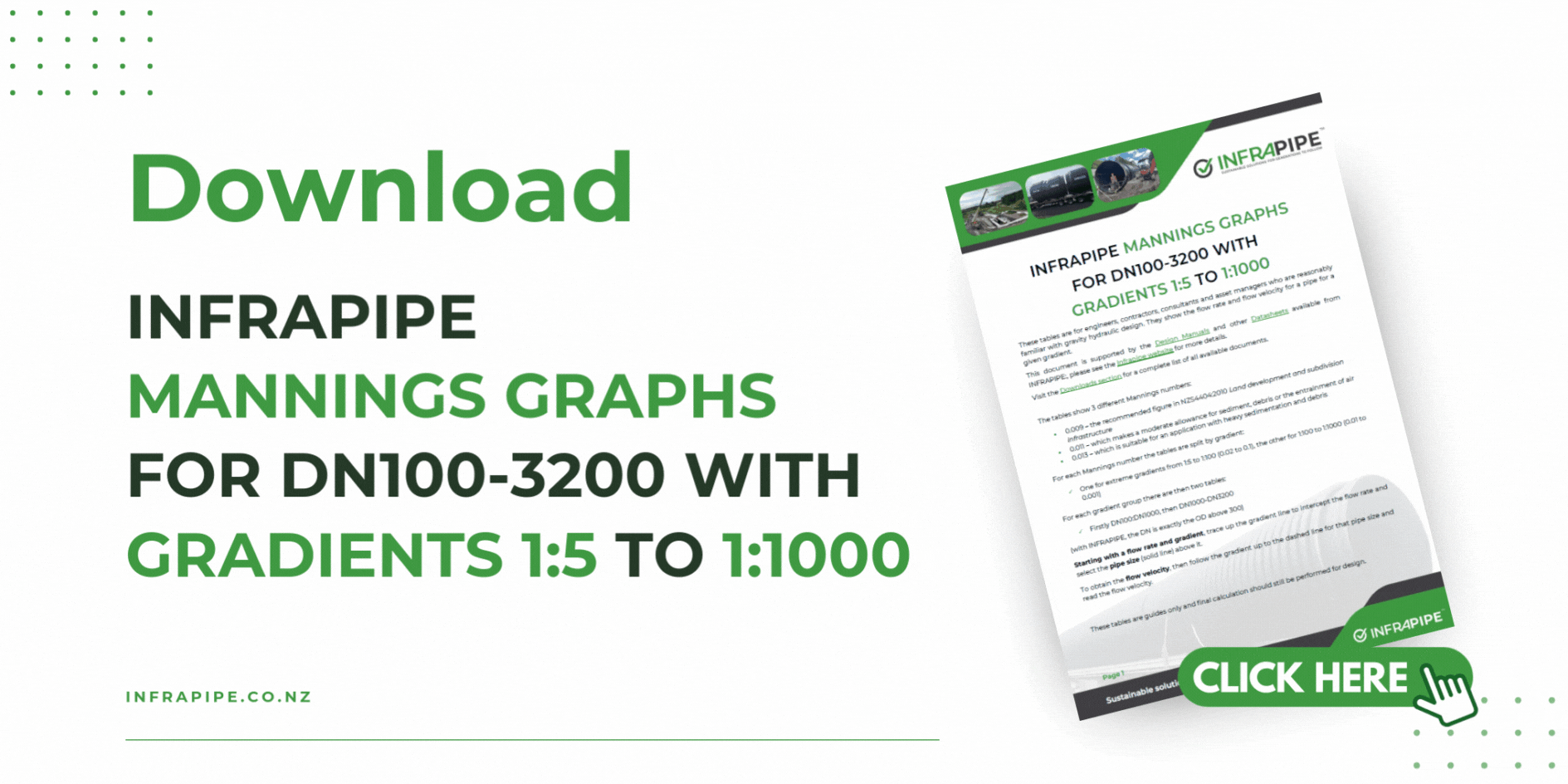These tables are for engineers, contractors, consultants and asset managers who are reasonably familiar with gravity hydraulic design. They show the flow rate and flow velocity for a pipe for a given gradient. Both The NZ Building Code and NZTA use 0.011 for PE and 0.013 for concrete pipes which translates to a difference in hydraulic capacity of 15-20%. Using PE saves a lot of money!
This document is supported by the Design Manuals and other Datasheets available from INFRAPIPE, please see the Infrapipe website for more details.
Visit the Downloads section for a complete list of all available documents.
The tables show 3 different Mannings numbers for INFRAPIPE products:
- 0.009 – the recommended figure for HDPE pipes in NZS4404:2010 Land development and subdivision infrastructure
- 0.011 – which makes a moderate allowance for sediment, debris or the entrainment of air
- 0.013 – which can be suitable for an application with heavy sedimentation and debris
The NZ Building Code, NZTA (P-46) and KiwiRail stipulate 0.011 for HDPE and 0.013 for concrete. This translates to a difference of hydraulic capacity of 18-23%.
The tables are in colour first and then repeated in B/W (for printing). Then for each Mannings number the tables are split by gradient:
✓ One for significant gradients from 1:5 to 1:100 (0.02 to 0.1), the other for 1:100 to 1:1000 (0.01 to 0.001)
For each gradient group there are then two tables:
✓ Firstly DN100:DN1000, then DN1000-DN3200
For INFRAPIPE 375+, the DN is exactly the ID, below that 300=298, 225=218,150=147,100-98)
Starting with a flow rate and gradient, trace up the gradient line to intercept the flow rate and select the pipe size (solid line) above it.
To obtain the flow velocity, then follow the gradient up to the dashed line for that pipe size and read the flow velocity.
These tables are guides only and final calculation should still be performed for design.
Any questions please email [email protected] and don’t forget we are still making KRAH™ pipes to DN3200, tanks to any cubic metreage even 200M³ and up, solid wall from DN525 to 2m+ and new SN4/SN8 & SN16 corrugated culvert 100-1000mm.
INFRAPIPE™ is fully committed to maintaining the highest standards of certification.


